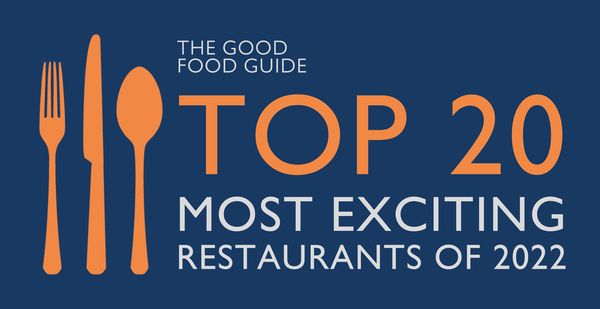I wonder if other inspectors and reviewers are experiencing a feeling of distance from restaurants in this price bracket and style. I’m definitely no longer the target audience of these restaurants and struggle to recommend experiences neither I nor any of my friends could really afford. Maybe this makes me a bad inspector or means I shouldn’t make visits in the top-end range, but I hope it’s more a sign that how we score should reflect our own incomes and interests because these, in theory, should mirror those of our readers. I don’t want to type these words because I have so many fond memories of this restaurant, but I would not pay to eat here and I literally know no one I could recommend it to.
I asked to review this restaurant because I felt that if anywhere could reconcile me to the pleasures of high-end dining again it was here – a restaurant that, more than perhaps anywhere else, always made destination dining fun, relaxed, affordable and incredibly delicious. On this visit it achieved the opposite, delivering a meal that, while enjoyable, was trend-driven, over-savoury and unable to justify its costs.
Don’t get me wrong, the experience was great, and the food would score a low nine or high eight on the old rating system. Yet I could no longer afford to eat here as a non-professional. I don’t have £200+ to spend on a single meal (a price that doesn’t include service) nor do I think I need spend this to have an exceptional dining experience.
The food was Very Good. It was once Exceptional: no chef got the balance of deliciousness to unfussiness more right. They made products the star of the show yet never in an over-simple, dull way. The celeriac was as good as the grouse; the beetroot as good as the beef; everything tasted of itself and was at least equal to the best version of that ingredient you’d ever try. Trends were avoided. There was no room for molecular fiddling, foraging and fusion that all came and went in other establishments; it was a simple, confident and timeless approach.
This meal felt comparatively self-conscious with trendy ingredients and techniques used widely in other restaurants. Seaweed doesn’t obviously belong in puddings. Matcha isn’t remotely seasonal. Ponzu is no substitute for classical saucing. Truffle and caviar is ubiquitous and frivolous. Farmed mushrooms are de rigueur. ChalkStream trout is the new Loch Duart salmon. The feel of the menu was ‘generic-UK-top-end’ more than the riveting excitement of a unique, confident signature style.
Warmth is hard to do in formal settings and as much as it can be done when you have perhaps eight different people all doing eight different things for you, this restaurant nails it. Yet, no matter how well done, this suited, formal style of service all still feels a bit unnecessary. I’ve enjoyed a one-man-band service as much as here, yet I know which style is aimed at me as a consumer and which is aimed at international visitors to London with pots of cash, a passing interest in eating out and a more-than-passing interest in being seen and fawned over.
The wine list is expansive and expensive. If you have a lot of money and like Burgundy it’s a dream. If you want to drink by the glass it's painful. But equally it’s not entirely punishing - there are a few bottles at £50 that appealed (this is the entry point) and below £70 there are a lot more. I found the wine matching ok. Most were texture and taste driven – flavour is the hardest thing to match and that wasn’t really being done. I didn’t try any wines that set my world alight as I’d have expected to for £130.
I experienced a meal that was mostly delicious, service that was warm within the confines of high end dining, a cooking style that was barely unique, and pricing that was high enough to be attainable only to a few. I don't think it's fair to score a restaurant built on so much talent and hard work less than Good, but equally I don't see how to go higher. This restaurant wouldn’t leave a reader feeling robbed by their special occasion splurge but equally there are now better, less famous, less widely commended London restaurants in which to have that splurge.
And there is no back door for those of us who love to eat yet can’t stretch the budget – the menu is the menu and only slightly reduced in size and price for lunch service. Pollen Street have such a fairly priced set lunch as to be positively egalitarian in comparison – yet many of the Guide’s most commended restaurants share this restaurant’s increasingly inclusive clientele. Bibendum, Moor Hall, Endo, L’Enclume, Ynyshir and Raby Hunt: I have lost touch with all of them on the basis I am no longer the target guest. I understand the costs and I know the owners are doing nothing wrong in cooking for an ever smaller, ever wealthier target market with the historic expectation that guides will commend their culinary efforts irrespective of who can afford them. The question is, is this relevant for readers of The Good Food Guide?
Features
An inspector’s report: who is this fine dining for?
Published 01 November 2023
A Good Food Guide inspector is dispatched to a high-end classic to find it falling short of expectations. It begs the question, who are these restaurants hoping to serve?
CONTINUE READING...
Become a member of the Good Food Club today for access to unlimited articles, exclusive perks and member-only events
Learn more about membershipAlready have an account? Log in






